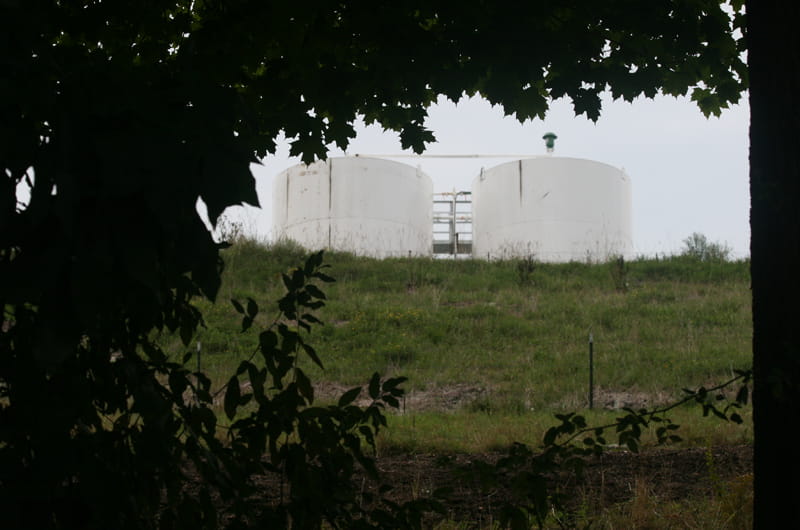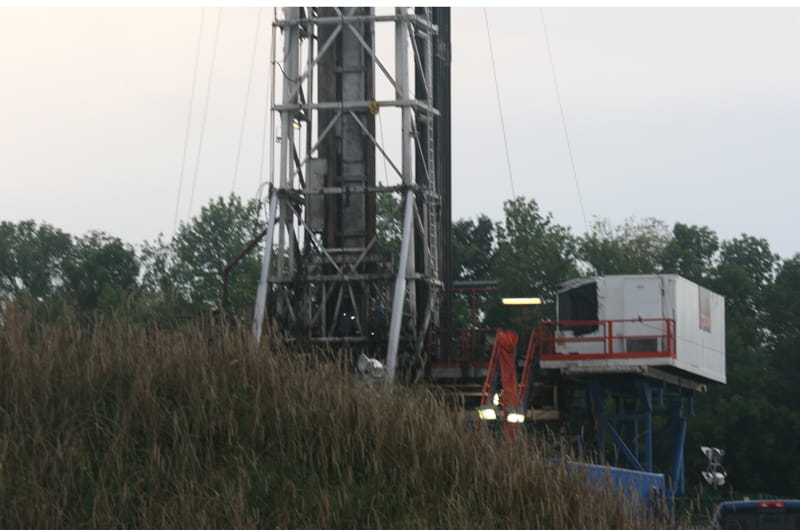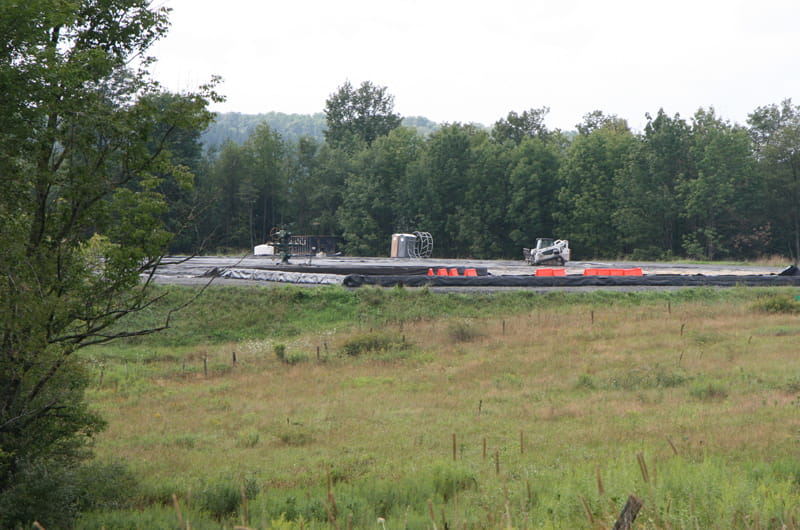Drexel Researchers First to Detect Air Quality Effects of Natural Gas Extraction in Pennsylvania's Marcellus Shale Region

- Mosquitoes' Bloodsucking Tubes Could Enable High-Definition 3D Printing
- Drexel Selects New, World-Class Life Sciences Building at 3201 Cuthbert Street for Medical Research Operations
- Breakthrough on Gene Therapy for Hereditary Spastic Paraplegia
- Drexel Environmental Collaboratory Releases Cross-Sector Findings on Severe Weather Recovery Challenges

Using an Aerodyne Research, Inc. Mobile Laboratory and fence line tracer-release protocol, the team was able to measure emissions without having direct access to the sites.
A team led by environmental engineers from Drexel University are the first independent researchers to take a closer look at the air quality effects of natural gas extraction in the Marcellus Shale region of Pennsylvania. The group used a mobile air quality monitoring vehicle to survey regional air quality and pollutant emissions at 13 sites including wells, drilling rigs, compressor stations and processing areas. Their work establishes baseline measurements for this relatively new area of extraction.
While there have been a number of studies focusing on water quality impacts related to natural gas extraction in shale regions across the country, few have looked at the effect on air quality. In a paper recently published in the journal Environmental Science & Technology, Peter DeCarlo, PhD, an assistant professor in the College of Engineering and College of Arts and Sciences, and J. Douglas Goetz, a doctoral researcher in the Drexel Air Resources Research Laboratory, present the findings of a two-month mobile air monitoring campaign in several counties in the northeastern and southwestern Pennsylvania.
The team looked specifically at gaseous chemicals and particulate matter released into the air from natural gas extraction. They compared levels of carbon monoxide, methane, ethane, nitrogen oxides and other volatile organic compounds to those found in other shale formations across the country where natural gas was being extracted.
According to DeCarlo, air emission studies of shale gas extraction facilities in this region have thus far focused solely on the release of methane due to its impact on the climate system. DeCarlo’s research has a broader scope and is the first to also test for air pollutants that could pose a more immediate and local health hazard.
The most significant findings of the research include:
- Relatively small increases in chemicals that affect air quality, such as nitrogen oxides and volatile organic chemicals compared to other monitored regions. This indicates that these types of emissions cannot be generalized for all oil and natural gas extraction regions.
- The number of ultrafine particles originating from compressor stations was elevated, although the total particulate mass was not significantly increased. Ultrafine particles, though not regulated in the U.S., are thought to have health impacts.
- Methane emissions observed were generally higher than those reported in previous studies.
DeCarlo’s team collected the data in collaboration with Aerodyne Research, Inc., using its Mobile Laboratory vehicle that looks something like a moving van with several sampling inlets affixed to the roof and instruments and computers for data processing inside. The Electric Power Research Institute funded the study and its air quality scientists helped guide the research concept and design plan.

The research focused on two distinct regions of the Marcellus Shale formation where hydraulic fracturing is being used to extract natural gas. Bradford and Susquehanna are two counties in Northeast Pennsylvania that are part of the region known for producing “dry gas”—gas that is predominantly methane. The team spent two weeks in the summer of 2012 in the region before performing similar sampling in the southwestern part of the state, which is known to produce “wet gas.” Wet gas contains higher levels of hydrocarbons including ethane, propane and butane, which can be separated and sold or used in other chemical processes.
Despite not having direct access to the sites, the group was able to use a fence line tracer-release sampling protocol. This allowed them to make downwind measurements with the mobile laboratory and provide an accurate assessment of site emissions and potential air quality impact.

The team collected air quality data from four types of sites associated with the extraction and processing of natural gas: drilling sites—where the wells are being created; completion sites—the end of the drilling and hydraulic fracturing process when wells are prepared for continuous natural gas extraction; production sites—where natural gas is actively being extracted; and compressor stations—where the natural gas is pressurized for transport.
“In looking at a cross section of sites, we identified compressor stations as one of the larger long-term emission sources,” DeCarlo said. Completion sites were another large source of pollutants, although these emissions are transient. “In terms of persistent impacts to local air quality, compressor stations and other post-extraction processing are major sources of pollutants that have the potential to affect downwind air quality.”

DeCarlo sees these findings as the first step toward a better understanding of the impact of natural gas extraction on the environment, which will allow leaders and citizens to make more informed choices and policies regarding the practice and energy policy as a whole.
“It’s important not only to understand the impact of natural gas extraction on local and regional environments,” DeCarlo said. “But this information also fills in part of a bigger picture of the overall air quality and climate-relevant emissions from the entire life cycle of shale gas compared to other sources of electrical power including nuclear, renewables and other fossil fuels like coal.”
Drexel News is produced by
University Marketing and Communications.